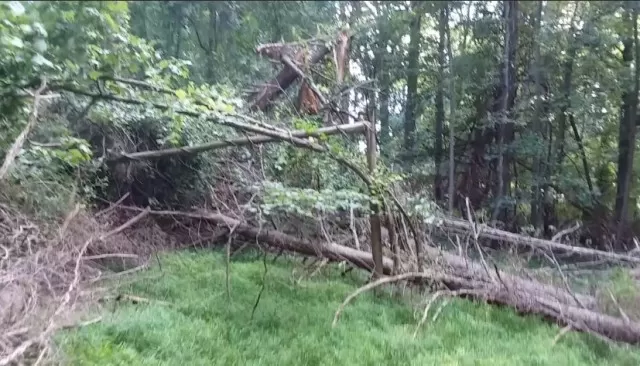10 Unexpected Reasons Homeowners Can Be Fined (Part 1), As a responsible homeowner, it’s crucial to maintain the safety, cleanliness, and compliance of your property with city ordinances. While many homeowners are aware of the need to keep their grass at a reasonable height, there are several other common code violations that every homeowner should be familiar with to prevent potential fines and maintain a harmonious neighborhood.
One common violation pertains to the maintenance of Outdoor Spaces. Overgrown shrubs, trees, or bushes that obstruct sidewalks, roads, or neighboring properties can lead to issues with code enforcement. Ensuring that your landscaping is well-trimmed and maintained is not only aesthetically pleasing but also helps maintain accessibility and safety.
Another common issue relates to property maintenance. Neglected properties with peeling paint, broken windows, or structural damage not only detract from the overall neighborhood’s appearance but also violate city codes. Regular upkeep and repairs are essential to maintain property values and ensure your home meets all safety standards.
Additionally, it’s essential to be mindful of zoning regulations, such as restrictions on short-term rentals or commercial activities conducted from your home. Understanding and adhering to these regulations can prevent legal complications and maintain the character of your neighborhood.
In conclusion, being an informed homeowner and proactively addressing these common code violations will not only help you avoid fines but also contribute to a safe, clean, and harmonious community that benefits everyone.
The Dangers of Stagnant Water: Mosquito Breeding Ground

In areas prone to heavy rains or flooding, it’s common for puddles to form in yards, buckets, or other outdoor containers.
However, it’s crucial to be aware that letting stagnant water sit for an extended period can lead to various problems. Stagnant water is not only unsightly but also poses health risks as it can become a breeding ground for disease-carrying mosquitoes.
Mosquitoes lay their eggs in standing water, and the larvae that hatch develop in these water sources.
Stagnant water provides an ideal environment for mosquito breeding, increasing the risk of mosquito-borne diseases such as West Nile virus and Zika virus.
To protect yourself, your family, and your neighborhood from these health risks, it’s essential to take proactive measures to prevent and eliminate stagnant water.
Regularly emptying containers, ensuring proper drainage in your yard, and keeping gutters clean are effective ways to mitigate the formation of stagnant water and reduce the mosquito population in your area. By doing so, you contribute to a healthier and safer outdoor environment for everyone.
Consider Local Regulations When Hanging Clotheslines
Hanging clothes to dry is indeed an environmentally friendly way to do laundry, as it reduces energy consumption and helps lower utility bills.
However, it’s essential to be aware of local regulations and guidelines when it comes to using clotheslines, as they can vary from one place to another.
Many cities and neighborhoods have rules and restrictions regarding the placement of clotheslines, particularly in visible front yards.
To avoid potential violations and maintain good neighborly relations, it’s advisable to check your local ordinances or homeowner’s association rules to determine where and how you can hang your laundry to dry.
If you’re limited by such regulations, using a backyard or an inconspicuous location for your clothesline can be a practical solution that allows you to enjoy the environmental benefits of air-drying your laundry while complying with local guidelines.
Maintain Visible Address Numbers for Safety

When landscaping your yard, it’s important to strike a balance between creating a lush and beautiful environment and ensuring the safety of your home.
Obstructed address numbers can pose a significant safety concern, as emergency personnel such as firefighters, police, and paramedics rely on these numbers to quickly locate your home during emergencies.
In many places, obstructed or obscured address numbers are a violation of code compliance due to their potential impact on public safety.
To avoid any issues and ensure the safety of your household and neighborhood, it’s crucial to keep your address numbers visible and unobstructed at all times.
Consider periodically trimming or adjusting your landscaping to ensure that your address numbers remain clearly visible from the street.
This simple measure can make a significant difference in emergency situations and help first responders quickly and accurately locate your home when needed.
Secure Handrails for Stair and Deck Safety
Handrails are a critical safety feature for both indoor and outdoor stairs and decks.
They serve to provide support, stability, and balance, particularly for individuals with mobility challenges. In many places, handrails are not just recommended but legally required for safety reasons.
If you have outdoor steps or a deck with an unsecured handrail or, worse, no handrail at all, you may be in violation of local building codes and safety regulations.
Authorities may have the right to impose fines or require that you rectify the situation to ensure the safety of residents and visitors.
To avoid any potential legal issues and, more importantly, to prioritize the safety of those using the stairs or deck, it’s essential to inspect and maintain handrails regularly.
Ensure that handrails are securely fastened, in good condition, and compliant with local regulations. If repairs or installations are needed, it’s advisable to address them promptly to maintain a safe and compliant environment.
Maintain Clearance for Street Trees

Mature trees add natural beauty and character to neighborhoods, but it’s important to strike a balance between enjoying their aesthetic benefits and ensuring public safety, especially when they line streets.
Overgrown trees can become a nuisance and pose risks to both pedestrians and vehicles. Tree laws and regulations vary by city, but many municipalities have guidelines in place to address these concerns.
In Austin, Texas, for example, property owners are required to trim trees to provide at least 14 feet of clearance over the curb line.
This clearance helps ensure that streets remain safe and accessible for pedestrians, vehicles, and emergency services.
To maintain the health and beauty of street trees while also complying with local regulations, property owners should regularly inspect their trees for overgrowth and trim them as needed to meet clearance requirements.
Proper tree maintenance not only keeps streets safe but also supports the overall well-being of the urban forest. If you have concerns about your street trees, it’s advisable to consult with local authorities or arborists to ensure compliance with tree laws and regulations in your area.
*The information is for reference only.